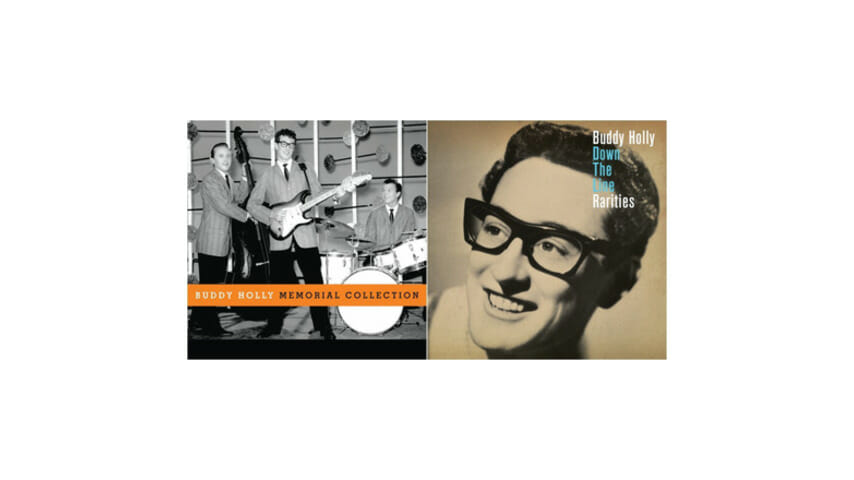Buddy Holly: Memorial Collection and Down the Line: Rarities

Memorial Collection: 97/100
Down the Line: Rarities: 78/100
Major piece of rock’s DNA finally digitized
For those of you late to the party, Charles Hardin “Buddy” Holley—his first records misspelled his name “Holly,” so he went with the error—was a bundle of contradictions born in 1936 in Lubbock, Texas, who managed to squeeze out a bunch of classic tunes before dying in a famous plane crash at age 22. His posthumous career has been marked by artistic desecration (the overdubbing of unfinished recordings), a biographical film with a vicious agenda, almost religious adulation (while touring England, he influenced much of the British Invasion’s music, not to mention inspiring a certain band to name itself The Beatles, after his band The Crickets) and a seeming inability (whether by his record company or the executors of his estate) to return his seminal catalogue of original recordings to print after a magnificent six-LP box set some decades back.
It’d be nice to have that set on shiny silver discs, but let’s count our blessings with the five we have here. The Memorial Collection is pretty much everything a normal fan needs: three CDs, in chronological order, from the early recordings of Buddy & Bob (Montgomery) to the Crickets’ various incarnations to the solo recordings made in New York and, finally, a judicious selection from “the apartment tapes,” made in Buddy’s living room at 11 5th Avenue in New York, with his new bride Maria Elena present. Down the Line: Rarities, as advertised, is two discs of material for fanatics and scholars—from a home recording of a Hank Snow song laid to tape before Holly’s voice had changed to the entire Buddy & Bob oeuvre, recordings of the Crickets from the Hollys’ garage (home of the cricket that—after ruining countless attempts at recording rehearsals—gave the band its name), outtakes of released material and, finally, the entire apartment tapes, which includes a version of “Wait til the Sun Shines, Nellie,” recorded at his mom’s request, and Maria Elena (who was Puerto Rican) counting to 10 in Spanish. Here, too, are two slow, solo-with-guitar takes of “Slippin’ and Slidin’,” interpretations of the song that are simultaneously sexy, dangerous and tender.
-

-

-

-

-

-

-

-

-

-

-

-

-

-

-

-

-

-

-

-

-

-

-

-

-

-

-

-

-

-

-

-

-

-

-

-

-

-

-

-








































